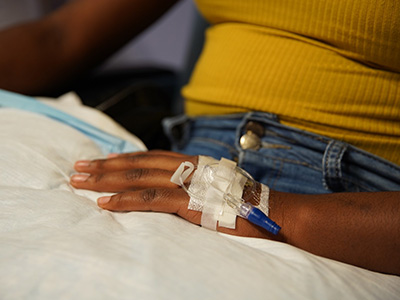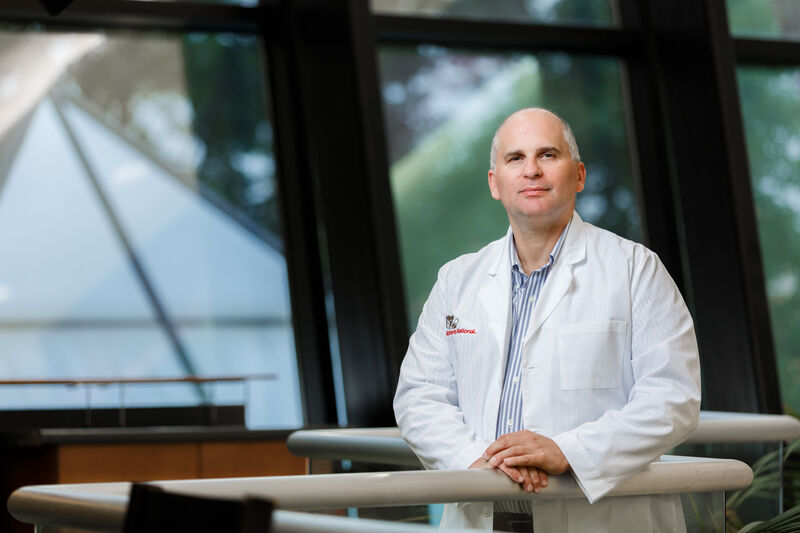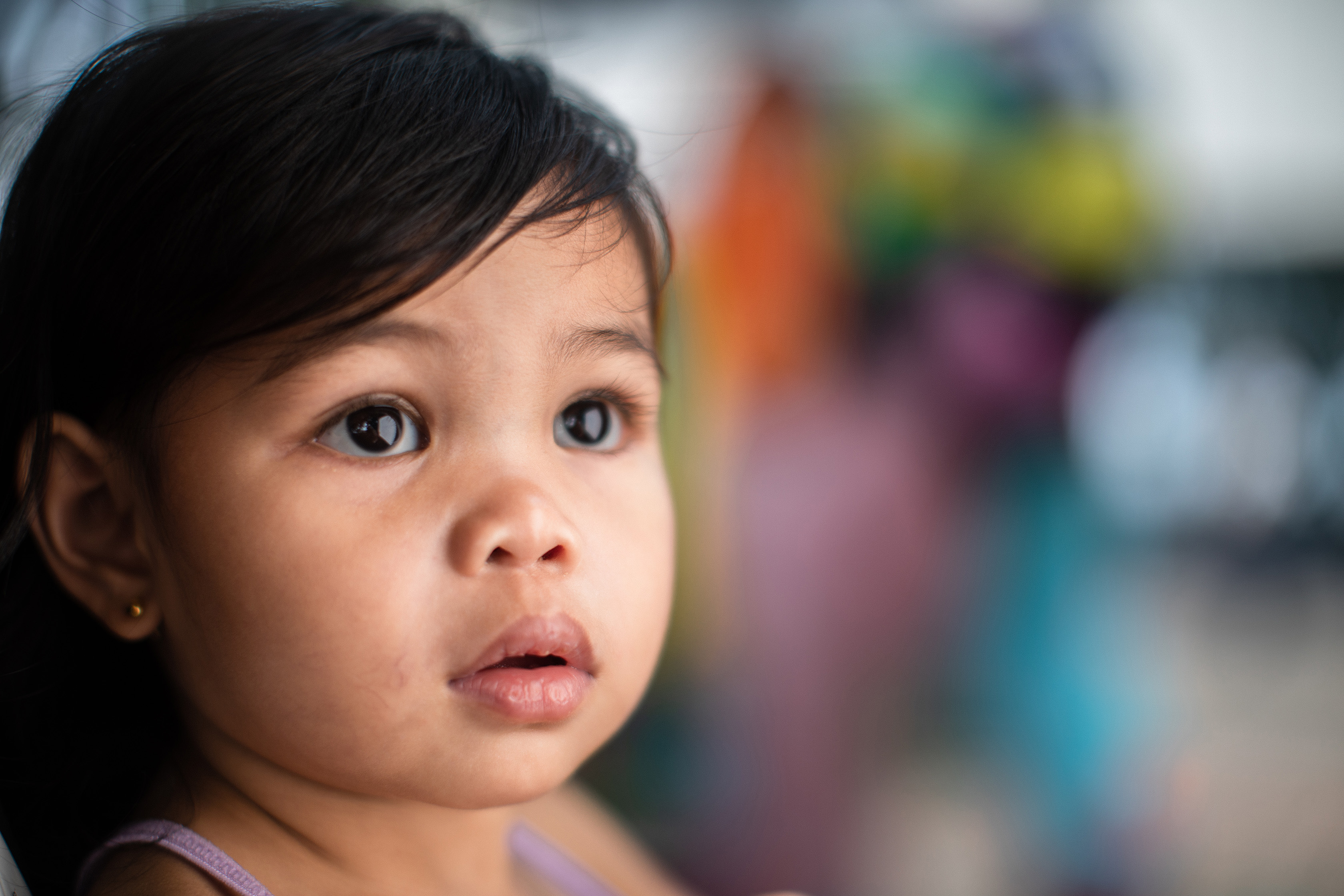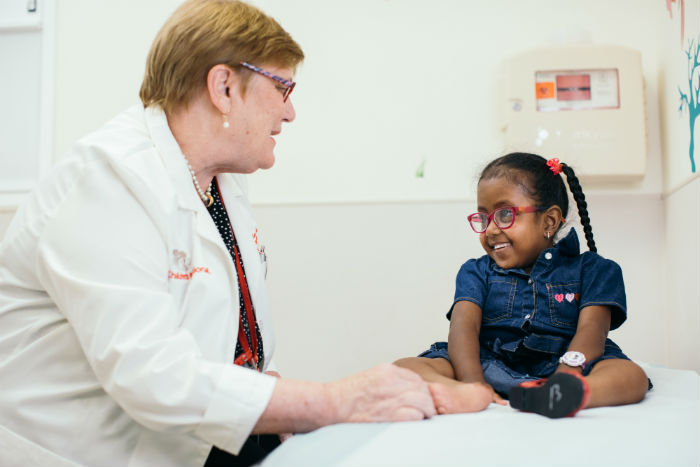Condition
Pediatric Anorexia Nervosa
What You Need to Know
Anorexia is a serious medical illness that affects a child's eating behaviors. It's an eating disorder marked by self-starvation.Key Symptoms
Diagnosis
Treatment
Frequently Asked Questions
What is anorexia nervosa in children?
Anorexia nervosa is also called anorexia. It is a serious medical illness that affects a child's eating behavior. It's not a lifestyle choice.
Anorexia is a form of self-starvation. Children and teens with this health problem have a distorted body image. They think they weigh too much. This can lead them to severely limit how much food they eat. It can also leads to other behavior that stops them from gaining weight.
There are two types of anorexia:
- Restrictor type. Children with this type severely limit how much food they eat. This often includes foods high in carbohydrates and fat.
- Bulimic (binging and purging) type. Children with bulimia eat too much food (binge) and then make themselves throw up. They may also take large amounts of laxatives or other medicines that clear out the intestines.
What causes anorexia in a child?
Anorexia most often starts as regular dieting. But it slowly changes to extreme and unhealthy weight loss.
Other things that may play a role in anorexia are:
- Social attitudes toward body appearance
- Family influences
- Genetics
- Brain chemical imbalances
- Developmental issues
Children with anorexia are more likely to come from families with a history of:
- Weight problems
- Physical illness
- Other mental health problems, such as depression or substance abuse
Children with anorexia often come from families that are very rigid and critical. Parents may be intrusive and overprotective. Children with anorexia may be dependent and emotionally immature. They are also likely to cut themselves off from others. They may have other mental health problems, such as an anxiety disorder.
Which children are at risk for anorexia?
Most children with anorexia are girls. But that is changing. More boys are now getting it. The disorder was first seen in upper-class and middle-class families. But it's now found in all socioeconomic groups and in many ethnic and racial groups.
Risk may rise with a combination of factors. These include genetic, biological, environmental, behavioral, psychological and social factors.
What are the symptoms of anorexia in a child?
Each child’s symptoms may vary. They may:
- Have low body weight
- Fear becoming obese, even as they are losing weight
- Have a distorted view of their body weight, size or shape. For example, the child sees their own body as too fat, even when very underweight.
- Refuse to stay at the minimum normal body weight
- In girls, miss three menstrual periods without some other cause
- Do a lot of physical activity to help speed up weight loss
- Deny feeling hungry
- Be obsessed with making food
- Have strange eating behaviors
- Be socially withdrawn, grouchy, moody or depressed
Many physical symptoms linked to anorexia are often due to starvation and malnourishment. They may include:
- Very dry skin (when pinched and let go, it stays pinched)
- Fluid loss (dehydration)
- Belly pain
- Constipation
- Lethargy
- Dizziness
- Extreme tiredness (fatigue)
- Sensitivity to cold temperatures
- Being abnormally thin (emaciated)
- Growth of fine, downy body hair (lanugo)
- Yellowing of the skin
These symptoms may seem like other health problems. Have your child see their healthcare provider for a diagnosis. Early diagnosis and treatment are vital. They can help prevent future problems.
How is anorexia diagnosed in a child?
Parents, teachers and coaches may be able to spot a child or teen with anorexia. But many children first keep their illness very private and hidden.
A child psychiatrist or a mental health expert can diagnose anorexia. They will talk with parents and teachers about the child’s behavior. In some cases, your child may need mental health testing.
How is anorexia treated in a child?
Treatment will depend on your child’s symptoms, age and general health. It will also depend on how severe the condition is.
Treatment often involves a mix of:
- Individual therapy
- Family therapy
- Behavior changes
- Nutritional rehab
- Antidepressant medicines, if your child is also depressed
- Hospital stay to treat malnutrition
Anorexia is a serious condition that causes frequent health problems. It can be severe enough that it leads to death. Because of this, both your child’s healthcare provider and a nutritionist must be active members of the care team. Parents play a vital role in any treatment. Your child may need to go to the hospital for problems linked to weight loss and malnutrition.
What are possible complications of anorexia in a child?
Anorexia and the malnutrition that results can harm nearly every organ system in the body. It can be fatal. Anorexia has one of the highest death rates of any mental illness. Most deaths are associated with medical complications.
It may lead to health problems with the:
- Heart. Damage to the heart can happen because of malnutrition or repeated vomiting. A child may have a slow, fast, or irregular heartbeat. He or she may also have low blood pressure.
- Blood. About one in three children with anorexia have a low red blood cell count (mild anemia). About half of children with this health problem have a low white blood cell count (leukopenia).
- Digestive tract. Normal movement in the intestinal tract often slows down with very restricted eating and severe weight loss. Gaining weight and taking some medicines can help fix it.
- Kidneys. Fluid loss (dehydration) from anorexia may lead to highly concentrated urine. Your child may also make more urine. This may happen when the kidneys’ ability to concentrate urine is impaired. Kidney changes often return to normal when your child is back to normal weight.
- Endocrine system. In girls, a lack of menstrual periods is one of the hallmark symptoms of anorexia. It often happens before severe weight loss. It may continue after normal weight is restored. Lower levels of growth hormones are also sometimes found in teens with anorexia. This may explain the delayed growth sometimes seen in children with anorexia. Normal eating habits often restore normal growth.
- Bones. Children with anorexia are at a greater risk for broken bones. When anorexic symptoms start before peak bone formation has been reached (most often mid- to late teens), there is a greater risk for decreased bone tissue or bone loss. Bone density is often found to be low in girls with anorexia. They may not get enough calcium in their diet or absorb enough of it.
How can I help prevent anorexia in my child?
Experts don’t know how to prevent anorexia. But spotting and treating it early can reduce symptoms. It can enhance your child’s normal development. It can also improve their quality of life. Encouraging your child to have healthy eating habits and realistic attitudes toward weight and diet may also help.
Meet the Providers Who Treat Anorexia Nervosa

Innovation District
Novel cell therapy treatments offer promise to immune-compromised children
.jpg) Rebecca's Story
Rebecca's StoryAt only 15-days old, Rebecca would need to undergo surgery to treat intestinal malrotation and volvulus. Find out how Children's team used minimally invasive surgery to treat the infant.
 Irina's Story
Irina's StoryWhen Irina and her husband first learned their infant daughter had a serious health condition, they immediately began researching the best doctors and surgeons to care for her. Read about Irina's story.
 Giving Bella Hope for a Brighter Future
Giving Bella Hope for a Brighter FutureIn the first weeks of life, Bella underwent a series of procedures that her doctors and family agreed were necessary to end constant seizures from hemimegalencephaly (HME), a rare brain disorder in which one half of the brain grows abnormal and large and misbehaves by triggering repeated difficult seizures.
 Youth Pride Clinic
Youth Pride ClinicThe Youth Pride Clinic provides primary and specialty care to adolescent LGBTQ (lesbian, gay, bisexual, transgender and questioning) patients.

Eating Disorders Clinic
The Eating Disorders Clinic treats adolescents and teens with eating disorders.

Psychology and Behavioral Health
In the Division of Psychology and Behavioral Health, our child psychologists and other mental health professionals work exclusively with children and teens, emphasizing patient and family-focused care.

Bone Health Program - QA
Orthopaedists at Children’s National offer world-renowned expertise and life-changing care, including surgery, for children at high risk for bone fracture.

Psychiatry and Behavioral Sciences
Psychiatry and Behavioral Sciences at Children’s National offers assessment, diagnosis and care for children and teens with behavioral, emotional and developmental disorders.



